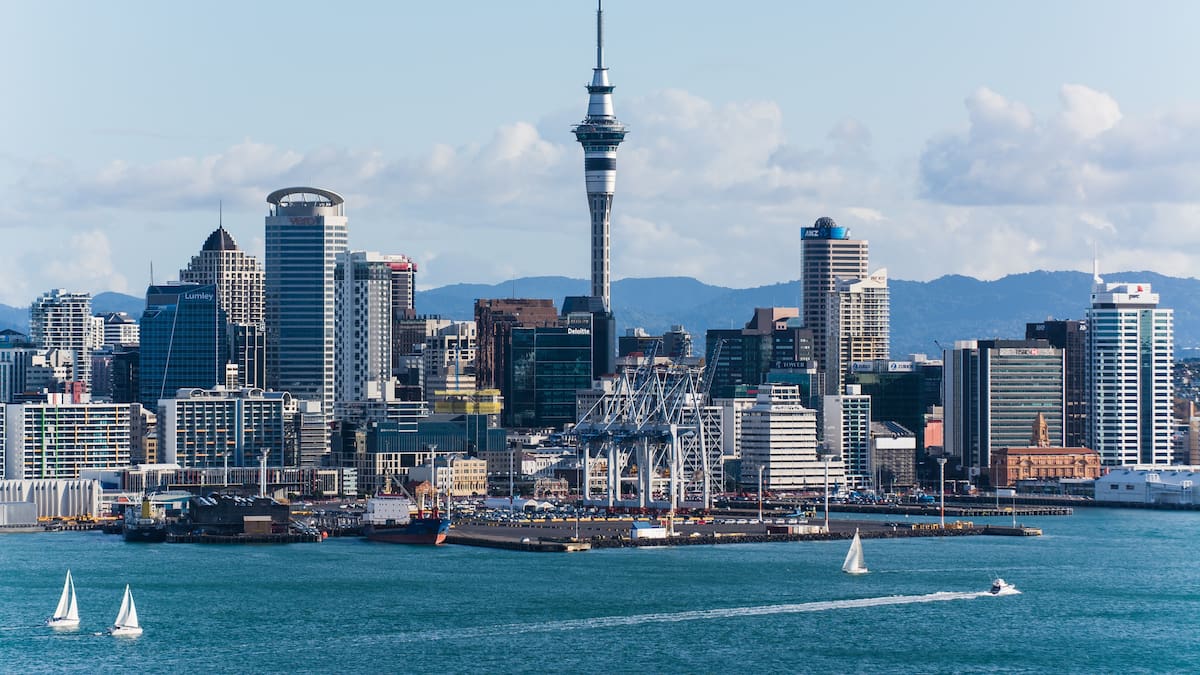To keep rates as low as possible, he said, the council had reduced its reliance on rates revenue, from 49% of total income at the start of the Super City to about 35% today.
Over the past three years, the council had delivered $608 million in financial benefits, including $96m from asset sales, $94m in procurement savings, and $418m in other efficiencies. Of these, $289m was permanent savings and $129m one-offs.
Without these savings, Burns said, rates would have been about 7% higher in the 2024-2025 financial year.
The Herald investigation also found that the city’s 550,000 households account for about 65% of the total rate revenue, the 43,000 businesses account for 31%, and the 30,000 farm/lifestyle properties 4%.
In the past seven years, the number of Auckland homes has risen from 473,000 to 547,000, an increase of 16%, while the number of businesses has grown by 10%, and farm/lifestyle properties have remained about the same.
The council was unable to provide earlier figures since the start of the Super City due to the way the data was collated.
Mayor Wayne Brown isn’t shying away from household rate increases of 7.7%, 6.8% and 5.8% during his first term, arguing that rates must rise as costs increase.
He also highlighted efforts to find savings, reduce debt and apply stricter scrutiny to new capital projects, claiming that, among the major metropolitan councils, Auckland has had the lowest rate rises.
By comparison, Wellington City Council has hiked residential rates by 12.8%, 8.8% and 12.3% over the past three years. Closer to home, Tauranga City Council has increased household rates by 8.9%, 7% and 9.2%. The last two years have included a new infrastructure levy to fund transport projects.
Brown said rate increases under his leadership had to be viewed in the context of an economic downturn, post-floods, and record infrastructure upgrades “ignored by my predecessors”.
“I’m proud we’ve managed to soften the blow for households doing it tough, [but] rates do need to increase as things cost more.
“The council can’t just ignore inflation, and we must invest more in maintaining our critical infrastructure and better prepare for economic downturns.
“We’ve also got the council thinking about not just how to save money, but how to make money out of what we do with the Auckland Future Fund,” Brown said.
The Future Fund was set up under Brown as a diversified wealth fund kick-started from the proceeds of the council’s remaining Auckland Airport shares, and expected to deliver $60m to $70m a year.
Water bills, which are charged separately to rates by Watercare on a user pays basis, have risen from $628 a year for the average household in 2011 to $1359 in the past financial year, said Watercare chief financial officer Angela Neeson.
Over that period, the average water bill increase was 4.2%. This was the water price increase, not the average bill increase, as bills vary based on how much people use, Neeson said.
It was important to note that water prices were reduced in 2011 to a standardised price of $1.30 for 1000 litres across the region, with price cuts ranging from 0.6% to 62.9% depending on location.

“For example, before the formation of the Super City, residents in rural Rodney were paying $3.50 for 1000 litres of water. That dropped to $1.30 on July 1, 2011. Fifteen years on, they’re still paying less – $2.296 for 1000 litres,” she said.
An Auckland Ratepayers Alliance spokesman said Aucklanders had been paying significantly more in rates since the 2010 amalgamation, but had not seen much improvement in the services they received.
“The so-called savings the council talks about are a drop in the bucket compared to how much extra Aucklanders have been made to pay over the years.
“While it’s true that rates now make up a smaller share of the council’s income, that’s because they’ve leaned harder on other charges, which are really just taxes by another name. No matter how the council slices it, Aucklanders are still paying the price.”
The spokesman said the council didn’t have a revenue problem; it had a spending problem, stating that ratepayers deserved real discipline from their council, not new ways to take more of their money.
Rodney councillor Greg Sayers, who has strongly opposed earlier rate rises and what he once called “reaching forever deeper into ratepayers’ pockets”, has moved to a more pragmatic line under Brown’s leadership.

He said the council needed to work hard to keep rates as low as possible, but Aucklanders were clear that they wanted to see their rates spent on catching up on decades of under-investment in infrastructure, and building ahead of future housing growth.
“Delivering this costs money,” said Sayers, saying councils needed a wider range of funding tools beyond rates and user charges.
“Ideas such as a regional accommodation levy, GST sharing on new builds, returning GST paid on rates to councils, and congestion charges have all been proposed but so far the coalition Government have not agreed to any of them,” he said.
*The figures for this article include several qualifications. The systems and data structure have gone through changes since 2010. The council could not provide the growth in the rating base because it was too big an undertaking. The figures do not include part-rateable properties.
Sign up to The Daily H, a free newsletter curated by our editors and delivered straight to your inbox every weekday.






